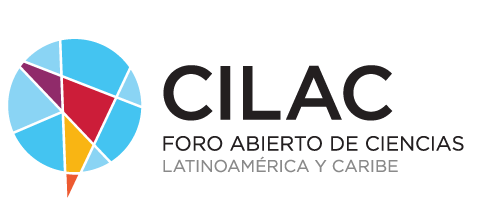Despite what its name suggests, trinitite is not a mineral. Nor is it naturally occurring. It is a material that formed during a decisive historical event: the first nuclear explosion in history, on July 16, 1945, in Alamogordo, New Mexico, USA. This unique material continues to tell us what happened at that sadly historic moment. The end of World War II was approaching. The Manhattan Project had been in development since 1941, when President Roosevelt, motivated by the possibility that Germany might develop a new type of weapon of mass destruction, authorized the launch of one of the most ambitious technical and scientific challenges in history. The project involved physicists, chemists, engineers, mathematicians, and thousands of workers in a race against time. The technical achievements of the Manhattan Project boosted US industrial and technological development. It also planted the seeds of the Cold War, thanks to its dramatic fruit, which emerged in July 1945 from the Los Alamos facility in New Mexico: the Gadget. The Gadget, prepared for the Trinity test. Los Alamos National Laboratory wikimedia commons The first functional prototype of a nuclear bomb The Gadget was the first functional prototype of a nuclear bomb. On July 15, 1945, it was assembled and ready to explode during the Trinity test, designed to experimentally verify theoretical predictions. The Gadget was an implosion device: a conventional explosive compresses the plutonium-239 core of the bomb, which reaches its critical mass and triggers a fission chain reaction that releases an amount of energy never seen before. Plutonium-239 is a readily fissile isotope produced by irradiating uranium with neutrons. Plutonium is found in nature only in trace amounts, in some uranium deposits where "natural nuclear reactors" were formed. One of the challenges of the project was to obtain sufficient pure plutonium from uranium. To do this, they used Reactor B at the secret Hanford plutonium production plant in Washington. Now a museum, it was the first commercial nuclear reactor for plutonium production, operated by the DuPont company, which forfeited the profits and distanced itself from this area so as not to be associated with the development of the bomb. At 5:29 a.m. on July 16, 1945, the Gadget was detonated in the remote desert of Jornada del Muerto. It was the first nuclear explosion in history, with a yield of approximately 19 kilotons. It was more powerful than calculated, destroying some scientific instruments located at a supposedly safe distance. "Now we're real sons of bitches" After the explosion, Kenneth Bainbridge, scientific director of the Trinity test, exclaimed: "Now we're real sons of bitches." Robert Oppenheimer remarked that this was the most appropriate phrase uttered after the explosion. Indeed, the next two bombs, called Little Boy and Fat Man (the military version of the Gadget), killed an estimated 214,000 people in the Japanese cities of Hiroshima and Nagasaki. Of these, approximately half died from the explosions and the rest from radioactive contamination. Trinitite, a silent witness to the explosion Plutonium-239 sustains a reaction, called fission, in which a neutron splits an atomic nucleus into fragments, releasing an average of 2.88 neutrons, which break up other plutonium nuclei, and so on. This reaction can be amplified in a chain reaction when the critical mass is exceeded with very pure plutonium. In this case, the explosive release of the energy produced by the splitting of the nuclei takes place. The fission of nuclei generates other chemical elements. These elements are not the same as their common versions (i.e., isotopes), but are highly radioactive. Neutrons also cause the transformation of the materials they are found with into radioactive elements. The result, in addition to the brutal explosion, is radioactive contamination that can reach hundreds of kilometers, because some elements are volatile or gases, such as iodine-131 or krypton-85. The heat melted the desert sand. The temperature of the Gadget's detonation exceeded that of the surface of the Sun. The heat melted the desert sand. Drops of incandescent glass rained down within a radius of hundreds of meters. Desktop Code Image for mobile, amp, and app Mobile Code AMP Code APP Code When it was all over, the researchers saw that the ground was covered in colored glass, usually green, sometimes forming beautiful transparent gems. They collected samples that were kept as a souvenir of the historic event. Some were even used to make exclusive jewelry. They soon realized this was a bad idea, as the trinitite contained elements produced by the explosion and was intensely radioactive, causing skin burns. Today, trinitite has lost most of its radioactivity and can be handled safely. However, it still contains traces of the nuclear explosion: Cesium-137: This is one of the main fission products of plutonium. With a half-life of 30 years, it is the most radioactive element in trinitite. Cesium-137 is one of the main causes of radioactive contamination in a nuclear explosion. Americium-241: Indicates that the bomb was made of plutonium-239. It will remain in trinitite for a millennium. Barium-133: This is difficult to detect, as its activity decreases by half in just over 10 years. It is thought to originate from the explosive used to detonate the bomb, called Baratol, made of barium nitrate. Europium-152: a radioactive element characteristic of trinitite, used to confirm its existence against counterfeits. MORE INFORMATION news No Scientists create 'DNA origami' to control virus assembly news No From a fork on a plate to nails on a blackboard: why do some sounds make our teeth stand on end? Radioactive elements will disappear over time, but the peculiar characteristics of this material, the presence of strange structures such as quasicrystals, and the isotopic traces that reveal its origin, will remain after the disappearance of civilization. A witness to our time on the planet and to human genius, arrogance, and evil. ABOUT THE AUTHOR César Menor-Salván Associate Professor, PhD. Biochemistry and Astrobiology. Department of Systems Biology, University of Alcalá **This article was originally published in The Conversation
